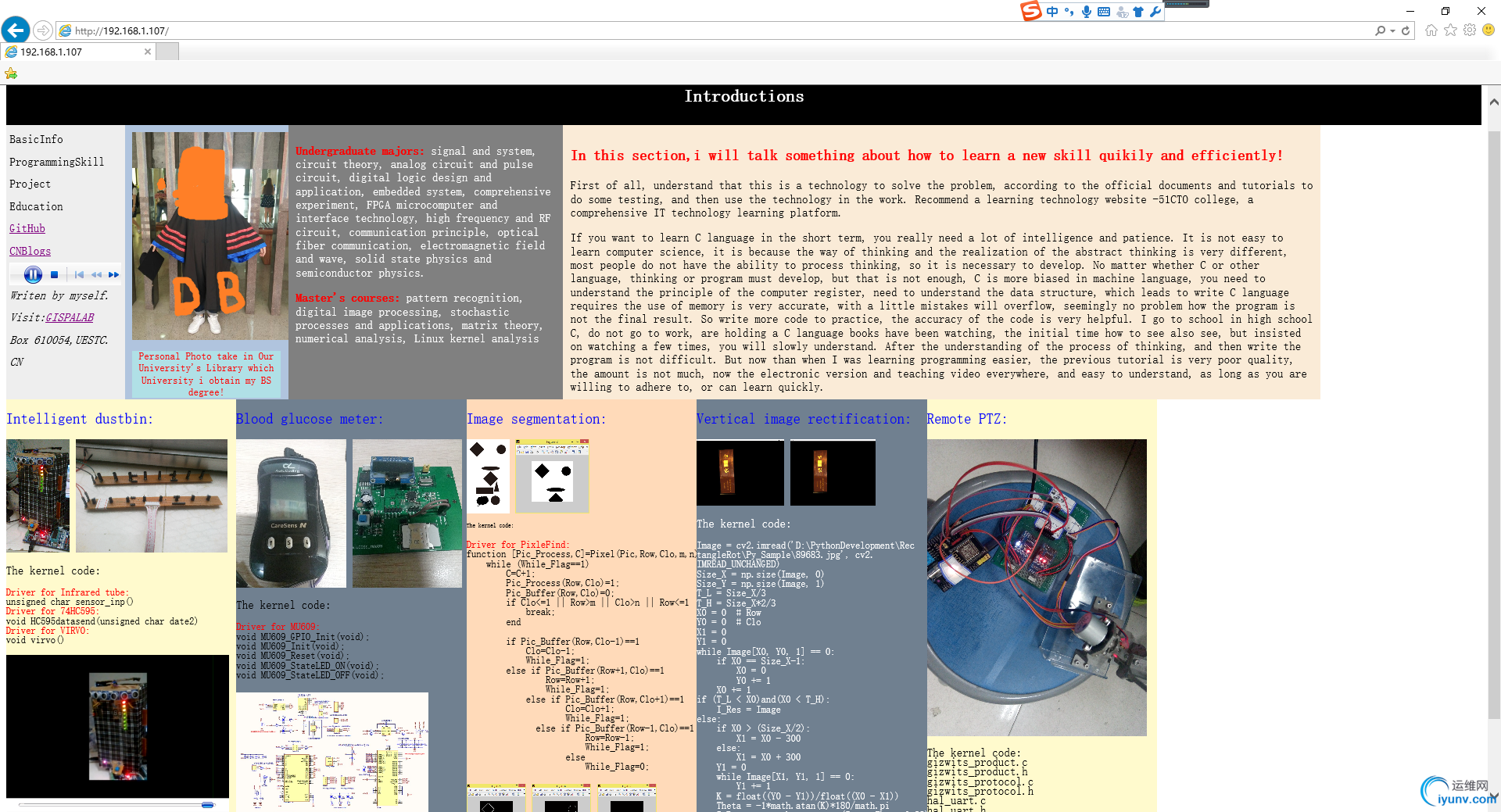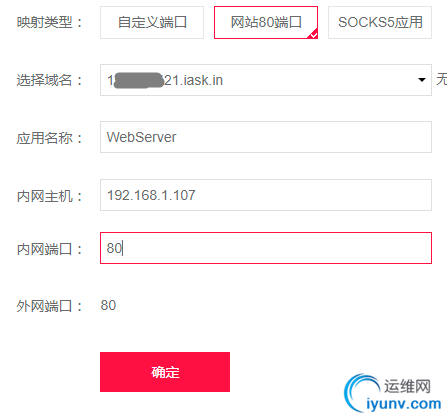|
|
系统环境Debian 8,内核版本

一、首先来安装nginx服务程序:
1、安装nginx服务需要的相关程序(记得在root权限下操作下面的指令)
aptitude install libpcre3 libpcre3-dev libpcrecpp0 libssl-dev zlib1g-dev
2、接下就下载nginx的源码配置安装,如下所示
cd /home
wget http://sysoev.ru/nginx/nginx-0.7.30.tar.gz
tar -zxvf nginx-0.7.30.tar.gz
cd nginx-0.7.30
./configure --sbin-path=/usr/local/sbin --with-http_ssl_module --with-http_stub_status_module
make&&make install
3、完成上面的安装之后,接下来就是编写对应的nginx服务的配置文件,配置文件是供我们调用和启动,关闭nginx服务的:
vim /etc/init.d/nginx
插入的内容如下所示,亲测可用~
#! /bin/sh
### BEGIN INIT INFO
# Provides: nginx
# Required-Start: $all
# Required-Stop: $all
# Default-Start: 2 3 4 5
# Default-Stop: 0 1 6
# Short-De.ion: starts the nginx web server
# De.ion: starts nginx using start-stop-daemon
### END INIT INFO
PATH=/usr/local/sbin:/usr/local/bin:/sbin:/bin:/usr/sbin:/usr/bin
DAEMON=/usr/local/sbin/nginx
NAME=nginx
DESC=nginx
test -x $DAEMON || exit 0
# Include nginx defaults if available
if [ -f /etc/default/nginx ] ; then
. /etc/default/nginx
fi
set -e
case "$1" in
start)
echo -n "Starting $DESC: "
start-stop-daemon --start --quiet --pidfile /usr/local/nginx/logs/nginx.pid \
--exec $DAEMON -- $DAEMON_OPTS
echo "$NAME."
;;
stop)
echo -n "Stopping $DESC: "
start-stop-daemon --stop --quiet --pidfile /usr/local/nginx/logs/nginx.pid \
--exec $DAEMON
echo "$NAME."
;;
restart|force-reload)
echo -n "Restarting $DESC: "
start-stop-daemon --stop --quiet --pidfile \
/usr/local/nginx/logs/nginx.pid --exec $DAEMON
sleep 1
start-stop-daemon --start --quiet --pidfile \
/usr/local/nginx/logs/nginx.pid --exec $DAEMON -- $DAEMON_OPTS
echo "$NAME."
;;
reload)
echo -n "Reloading $DESC configuration: "
start-stop-daemon --stop --signal HUP --quiet --pidfile /usr/local/nginx/logs/nginx.pid \
--exec $DAEMON
echo "$NAME."
;;
*)
N=/etc/init.d/$NAME
echo "Usage: $N {start|stop|restart|force-reload}" >&2
exit 1
;;
esac
exit 0
4、最后是使能对应的.sh脚本文件,相关的操作如下,直接执行就行了~(亲测可用)
/usr/sbin/update-rc.d -f nginx defaults #If Debian inform you that nginx script can't excutable,you need to use:chmod /etc/init.d/nginx #添加脚本到系统默认运行级别
ln -s /usr/local/nginx /etc/nginx #由于nginx是安装在/usr/local/,可以链接到我们常用的/etc/下
/etc/init.d/nginx start #现在可以运行nginx了
lynx http://localhost #或者用局域网其它机器访问本机
# If it show the info:Welcome to nginx! that means you have install nginx cerrectly!
二、测试如下所示(这里我稍微的改动了一哈子网页....懒得改回来了):

总之结果,大概就是这个样子的~
下面是index.html的相关内容:
<!DOCTYPE html>
<html>
<head>
<title>Welcome to nginx!</title>
<style>
body {
width: 35em;
margin: 0 auto;
font-family: Tahoma, Verdana, Arial, sans-serif;
}
</style>
</head>
<body>
<h1>Welcome to nginx!This is my first Web Project!Author MM1994UESTC</h1>
<p>If you see this page, the nginx web server is successfully installed and
working. Further configuration is required.</p>
<p>For online documentation and support please refer to
<a href="http://nginx.org/">nginx.org</a>.<br/>
Commercial support is available at
<a href="http://nginx.com/">nginx.com</a>.</p>
<p><em>Thank you for using nginx.</em></p>
</body>
</html>
关于HTML的相关语法也是比较简单的,如果不涉及JS,CCS等动态的复杂的网页设计,基本的Web网页的搭建也是够用了~
三、修改nginx服务的相关架构,下面是nginx.conf的内容,通过修改nginx.conf的相关内容,从而实现nginx的相关功能:
nginx service服务的文件结构如下所示:
这里最重要的,经常使用的文件夹是html文件夹和conf文件夹,分别包含了index.html文件和nginx.conf文件
nginx.conf文件内容:


#user nobody;
worker_processes 1;
#error_log logs/error.log;
#error_log logs/error.log notice;
#error_log logs/error.log info;
#pid logs/nginx.pid;
events {
worker_connections 1024;
}
http {
include mime.types;
default_type application/octet-stream;
#log_format main '$remote_addr - $remote_user [$time_local] "$request" '
# '$status $body_bytes_sent "$http_referer" '
# '"$http_user_agent" "$http_x_forwarded_for"';
#access_log logs/access.log main;
sendfile on;
#tcp_nopush on;
#keepalive_timeout 0;
keepalive_timeout 65;
#gzip on;
server {
listen 80;
server_name localhost;
#charset koi8-r;
#access_log logs/host.access.log main;
location / {
root html;
index index.html;# index.html index.htm;
}
#error_page 404 /404.html;
# redirect server error pages to the static page /50x.html
#
error_page 500 502 503 504 /50x.html;
location = /50x.html {
root html;
}
# proxy the PHP scripts to Apache listening on 127.0.0.1:80
#
#location ~ \.php$ {
# proxy_pass http://127.0.0.1;
#}
# pass the PHP scripts to FastCGI server listening on 127.0.0.1:9000
#
#location ~ \.php$ {
# root html;
# fastcgi_pass 127.0.0.1:9000;
# fastcgi_index index.php;
# fastcgi_param SCRIPT_FILENAME /scripts$fastcgi_script_name;
# include fastcgi_params;
#}
# deny access to .htaccess files, if Apache's document root
# concurs with nginx's one
#
#location ~ /\.ht {
# deny all;
#}
}
# another virtual host using mix of IP-, name-, and port-based configuration
#
#server {
# listen 8000;
# listen somename:8080;
# server_name somename alias another.alias;
# location / {
# root html;
# index index.html index.htm;
# }
#}
# HTTPS server
#
#server {
# listen 443 ssl;
# server_name localhost;
# ssl_certificate cert.pem;
# ssl_certificate_key cert.key;
# ssl_session_cache shared:SSL:1m;
# ssl_session_timeout 5m;
# ssl_ciphers HIGH:!aNULL:!MD5;
# ssl_prefer_server_ciphers on;
# location / {
# root html;
# index index.html index.htm;
# }
#}
}
View Code 这里我们一般通过修改29行的HTML的文件名就可以让nginx服务显示输出不同的网页内容(修改之后记得重启nginx服务:sudo /etc/init.d/nginx restart),我们可以使用自己编写的html文件,例如下面我们编写的相关的html文件:

这里html文件是保存在html文件夹当中的,Frame_0.html是我编写的脚本文件
Frame_0.html的具体内容如下:
<html>
<style>
#header{
background-color:black;
color:white;
text-align:center;
padding:5px;
}
#nav{
line-height:30px;
background-color:#eeeeee;
height:360px;
width:150px;
float:left;
padding:5px;
}
#Photos{
background-color:#B0C4DE;
width:200px;
height:350;
float:left;
padding:10px;
}
#section_o{
background-color:Gray;
color:white;
width:350px;
height:350px;
float:left;
padding:10px;
}
#section_t{
background-color:#FAEBD7;
width:1000px;
height:350px;
float:left;
padding:10px;
}
#footer_o{
backgound-color:Gray;
color:black;
float:left;
width:310;
height:600;
text-align:left
padding:5px;
}
#footer{
background-color:black;
color:white;
clear:both;
text-align:center;
padding:5px;
}
</style>
<body>
<div id="header">
<h2>Introductions</h2>
</div>
<div id="nav">
BasicInfo<br>
ProgrammingSkill<br>
Project<br>
Education<br>
<a href="https://github.com/mm1994uestc">GitHub</a><br>
<a href="http://www.cnblogs.com/uestc-mm/">CNBlogs</a>
<br>
<embed src="Sounds/Faded.mp3" height="30" width="150">
<br>
<address typle="font-size:18">
Writen by myself.<br>
Visit:<a href="http://gispalab.uestc.edu.cn/">GISPALAB</a><br>
Box 610054,UESTC.<br>
CN
</address>
</div>
<div id="Photos">
<img src="Picture/MyPic.jpg" width="210">
<p style="text-align:center;background-color:PowderBlue;font-size:14px;color:red">Personal Photo take in Our University's Library which University i obtain my BS degree!</p>
</div>
<div id="section_o">
<p><span style='color:red;font-weight:bold;'>Undergraduate majors:</span> signal and system, circuit theory, analog circuit and pulse circuit, digital logic design and application, embedded system, comprehensive experiment, FPGA microcomputer and interface technology, high frequency and RF circuit, communication principle, optical fiber communication, electromagnetic field and wave, solid state physics and semiconductor physics.</p>
<p><span style='color:red;font-weight:bold;'>Master's courses:</span> pattern recognition, digital image processing, stochastic processes and applications, matrix theory, numerical analysis, Linux kernel analysis</p>
</div>
<div style="line-weight:13px" id="section_t">
<p style="color:red;font-size:20;font-weight:bold;">In this section,i will talk something about how to learn a new skill quikily and efficiently!</p>
<p >First of all, understand that this is a technology to solve the problem, according to the official documents and tutorials to do some testing, and then use the technology in the work. Recommend a learning technology website -51CTO college, a comprehensive IT technology learning platform.</p>
<p>If you want to learn C language in the short term, you really need a lot of intelligence and patience. It is not easy to learn computer science, it is because the way of thinking and the realization of the abstract thinking is very different, most people do not have the ability to process thinking, so it is necessary to develop. No matter whether C or other language, thinking or program must develop, but that is not enough, C is more biased in machine language, you need to understand the principle of the computer register, need to understand the data structure, which leads to write C language requires the use of memory is very accurate, with a little mistakes will overflow, seemingly no problem how the program is not the final result. So write more code to practice, the accuracy of the code is very helpful. I go to school in high school C, do not go to work, are holding a C language books have been watching, the initial time how to see also see, but insisted on watching a few times, you will slowly understand. After the understanding of the process of thinking, and then write the program is not difficult. But now than when I was learning programming easier, the previous tutorial is very poor quality, the amount is not much, now the electronic version and teaching video everywhere, and easy to understand, as long as you are willing to adhere to, or can learn quickly.</p>
</div>
<div style="line-height:13px;background-color:#FFFACD" id="footer_o">
<p style="color:Blue;font-size:20px">Intelligent dustbin:</p>
<img src="Picture/Garbage.jpg" height="153">
<img src="Picture/Infrared tube.jpg" height="153">
<p>The kernel code:<br>
<Code>
<pre>
<span style="color:red">Driver for Infrared tube:</span>
unsigned char sensor_inp()
<span style="color:red">Driver for 74HC595:</span>
void HC595datasend(unsigned char date2)
<span style="color:red">Driver for VIRVO:</span>
void virvo()
</pre>
</Code>
<embed src="Video/Garbage.mp4" height="240"/>
</p>
</div>
<div style="line-height:13px;background-color:#708090" id="footer_o">
<p style="color:Blue;font-size:20px">Blood glucose meter:</p>
<img src="Picture/glucose1.jpg" height="200">
<img src="Picture/glucose2.jpg" height="200">
<p>The kernel code:<br>
<Code>
<pre>
<span style="color:red">Driver for MU609:</span>
void MU609_GPIO_Init(void);
void MU609_Init(void);
void MU609_Reset(void);
void MU609_StateLED_ON(void);
void MU609_StateLED_OFF(void);
</pre>
</Code>
</p>
<img src="Picture/glucose.jpg" height="195">
</div>
<div style="line-height:13px;background-color:#FFDAB9" id="footer_o">
<p style="color:Blue;font-size:20px">Image segmentation:</p>
<img src="Picture/Test.png" height="100">
<img src="Picture/Binary.png" height="100">
<p style="font-size:8px">The kernel code:<br>
<Code>
<pre>
<span style="color:red">Driver for PixleFind:</span>
function [Pic_Process,C]=Pixel(Pic,Row,Clo,m,n)
while (While_Flag==1)
C=C+1;
Pic_Process(Row,Clo)=1;
Pic_Buffer(Row,Clo)=0;
if Clo<=1 || Row>m || Clo>n || Row<=1
break;
end
if Pic_Buffer(Row,Clo-1)==1
Clo=Clo-1;
While_Flag=1;
else if Pic_Buffer(Row+1,Clo)==1
Row=Row+1;
While_Flag=1;
else if Pic_Buffer(Row,Clo+1)==1
Clo=Clo+1;
While_Flag=1;
else if Pic_Buffer(Row-1,Clo)==1
Row=Row-1;
While_Flag=1;
else
While_Flag=0;
</pre>
</Code>
</p>
<img src="Picture/Section1.png" height="80"/>
<img src="Picture/Section2.png" height="80"/>
<img src="Picture/Section3.png" height="80"/>
</div>
<div style="line-height:13px;background-color:#708090" id="footer_o">
<p style="color:Blue;font-size:20px">Vertical image rectification:</p>
<img src="Picture/Ori.png" height="90">
<img src="Picture/Res.png" height="90">
<p style="color:white">The kernel code:<br>
<Code style="color:white">
<pre>
Image = cv2.imread('D:\PythonDevelopment\Rec<br>tangleRot\Py_Sample\89683.jpg', cv2.<br>IMREAD_UNCHANGED)
Size_X = np.size(Image, 0)
Size_Y = np.size(Image, 1)
T_L = Size_X/3
T_H = Size_X*2/3
X0 = 0 # Row
Y0 = 0 # Clo
X1 = 0
Y1 = 0
while Image[X0, Y0, 1] == 0:
if X0 == Size_X-1:
X0 = 0
Y0 += 1
X0 += 1
if (T_L < X0)and(X0 < T_H):
I_Res = Image
else:
if X0 > (Size_X/2):
X1 = X0 - 300
else:
X1 = X0 + 300
Y1 = 0
while Image[X1, Y1, 1] == 0:
Y1 += 1
K = float((Y0 - Y1))/float((X0 - X1))
Theta = -1*math.atan(K)*180/math.pi
I_Res=rotate_about_center(Image,Theta,0.88)
</pre>
</Code>
</p>
</div>
<div style="line-height:13px;background-color:#FFFACD" id="footer_o">
<p style="color:Blue;font-size:20px">Remote PTZ:</p>
<img src="Picture/PTZ.jpg" height="400">
<p>The kernel code:<br>
gizwits_product.c<br>
gizwits_product.h<br>
gizwits_protocol.c<br>
gizwits_protocol.h<br>
hal_uart.c<br>
hal_uart.h<br>
</p>
</div>
<div id="footer">
<p>Copyright MM1994UESTC</p>
</div>
<body>
</html>
View Code HTML文件中涉及到的相关的图片、音频、视频等内容都保存在Picture Sounds Video对应的文件夹当中,最终的实验结果如下图所示:


在花生壳官网完成内网映射,选用80端口~
OK!基本的目标已经达成了,后面具体需要使用什么功能在添加吧~可以先感受一下,哈哈!!
若要使用外网访问,只需要按照之前在ESP8266文章中提到的路由器功能DMZ主机,或者使用花生壳的端口映射就可以实现了,如上图所示。
完~ |
|